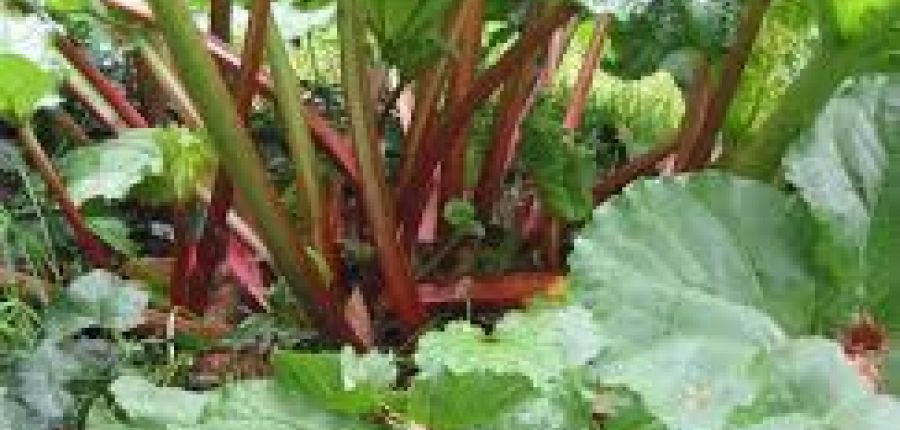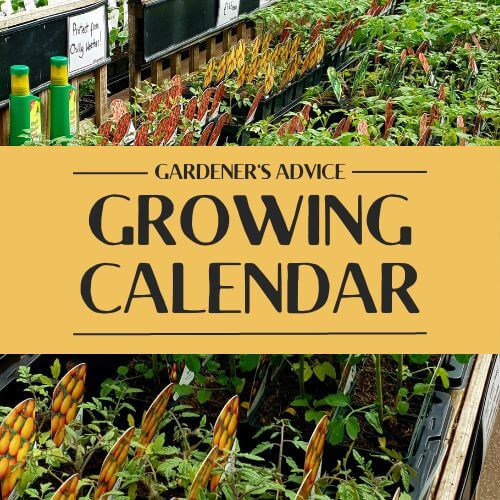Tending rhubarb
Posted By: rocket veg Category: Growing Veg, Seasonal AdviceDuring the winter months, the ‘crown’ – lurking just under the surface of the soil – should be busy taking in nutrients and developing shoots which first appear as a tight cluster of pale pink buds. Depending on the variety and given a bit of late winter sunshine, the buds will quickly grow into tall stems with impressive reddish-green leaves. Rhubarb crumble and pies are quintessentially British puddings, best made when the stems are young and are still tender and sweet, although if you love eating rhubarb, it is possible to continue picking stems until late June.
Planting rhubarb
Rhubarb is easy to grow and although it prefers a sunny spot, should do well in most situations. It can be grown from seed, but the simplest method is to plant a small crown: ask about and you’ll be sure to find someone on your allotment site who will divide a strong crown during the winter months when the plant is dormant and give you a chunk, which must be taken from the outside edge of the donor crown.
Dig a deepish hole, add a handful of bone meal or potash, pop in the chunk of rhubarb and fill in with good compost. It’s a tough plant, but hates sitting in water-logged soil when it may succumb to crown rot, a fungal infection, most likely to be brought on by poor drainage. The tip of the crown also needs to be exposed to frost which will break its dormancy.
The only drawback with planting from a crown which you have been given is that you are unlikely to know the variety – in which case, buy a crown as there are several varieties to choose from. ‘Timperley Early’ is the one to go for if you fancy eating rhubarb in April. Either way, don’t be tempted to harvest spears during the first season, no matter how healthy and tempting they look, as the plant needs to build up its strength. Left alone for the first year, a crown of rhubarb will reward you handsomely in the coming years.
Feeding
There may be nothing to see apart from a cane marking the spot where the crown is buried, but now is perfect time to give your rhubarb a winter treat. Rhubarb is a hungry plant and during the coming days I’m going to give mine a good feed by heaping some well-rotted manure over the spot where the crowns are. My plants will also appreciate a feed at any time of the year – high potash liquid made from comfrey leaves rotted down in an old plastic barrel.
Forcing rhubarb
In order to get a really early crop of the sweetest, tenderest rhubarb, you can force the plant to produce stems by covering the crown with an upturned bucket to exclude the light and trick the crown into putting on early growth. Victorian kitchen gardeners perfected the art of forcing and produced tall, shapely terracotta pots for the purpose, a hole at the top covered with a lid to enable growth to be checked and through which the ripe stems could be pulled as soon as they reached the top. Modern forcing jars are widely available (a great Christmas present!), although an old chimney pot works just as well and will add a touch of splendour to your veg patch.
If you want to try to force rhubarb, now is the time to put a suitable container over the spot where the crown is, not forgetting to add a good layer of muck first.
Harvesting the wonderful stems
Young stems are fragile, especially those which have been forced, so to keep them in one piece, grip the stem low down and pull upwards with firm pressure to free the stem from the crown. Avoid cutting stems as the stubby end left behind will be exposed to infection and pests. It is important not to harvest rhubarb in the year after it was planted in order to allow the crown to build up strength and the same applies when a crown has been forced.
Varieties
‘Timperley Early’: as the name suggests, is one of the earliest varieties, producing lots of strong stems in early spring. Good for forcing.
‘Champagne’: another a very early variety which is perfect for forcing and has a good flavour.
‘Victoria’: produces thick, deep red stems, tinged with green, for later pulling.







